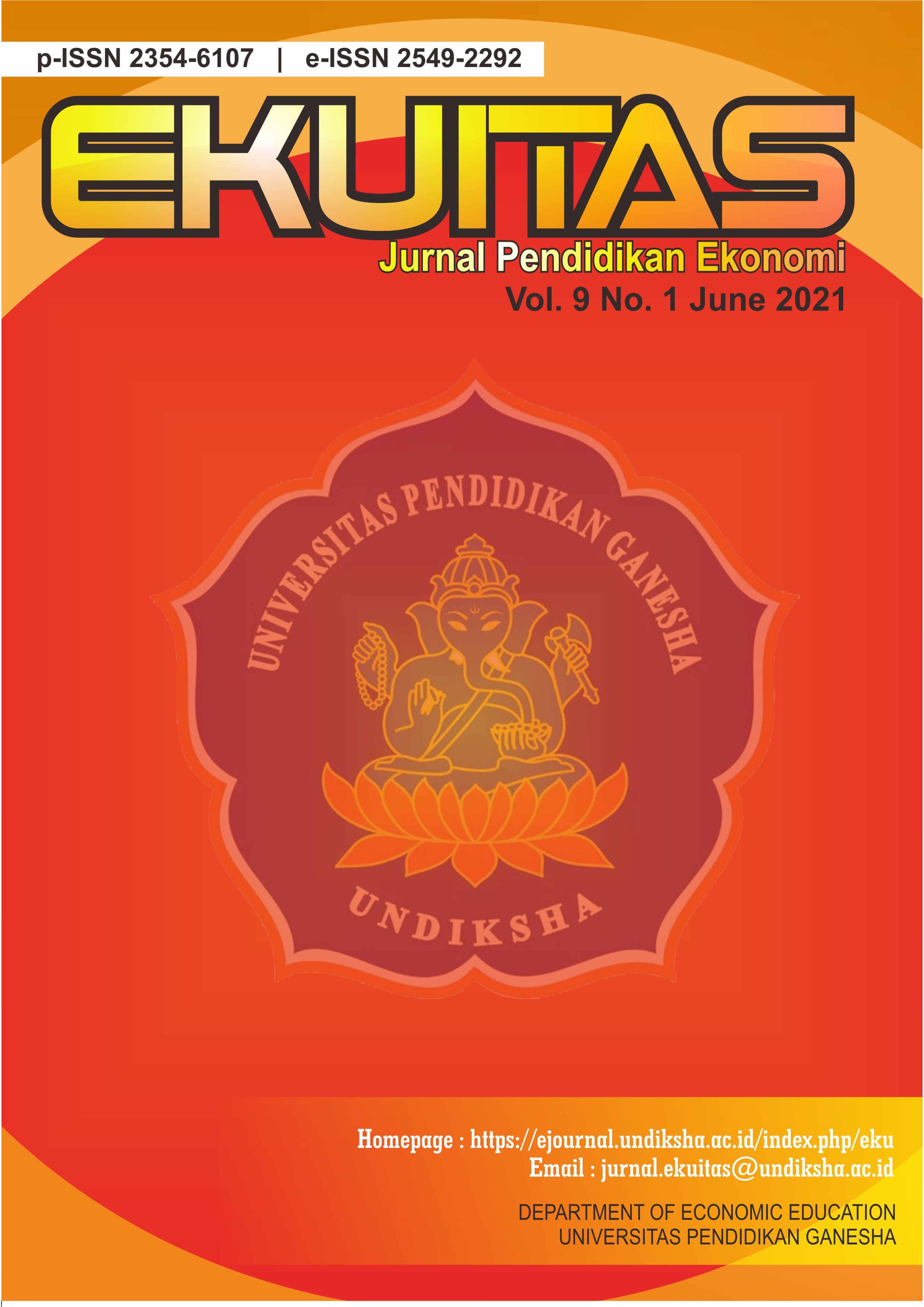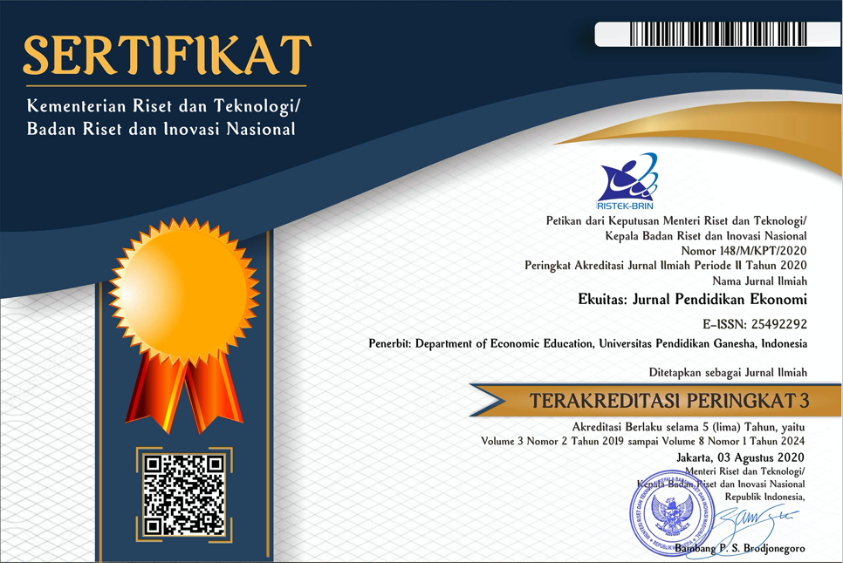Kajian Komoditas Ekspor Unggulan pada Sektor Industri Pengolahan Jawa Timur dalam Menghadapi RCEP
DOI:
https://doi.org/10.23887/ekuitas.v9i1.33634Keywords:
leading commodities, processing industry, RCEP aggrementAbstract
This research aims to analyze the best leading commodities from the processing industry sector to face the Regional Comprehensive Economic Partnership (RCEP) trade agreement. The 15 leading commodities come from each sub-sector of the processing industry which is the leading variable in RCEP member trading, making it a testing variable. Variable samples are from 2015-2020. Variable analysis using data from BPS East Java, and tested using Two Way ANOVA test. The results showed a significant difference from the export index of each leading commodity as a whole as well as specific, while showing the best leading commodities in terms of international market demand RCEP countries. Research shows that the highest advantage is found in the commodity sub-sector of mineral processing (2.74), while the lowest advantage in commodities sub-sector of the textile processing industry (0.09).
References
Barigozzi, M., et, al. (2010). Multinetwork of international trade: A commodity-specific analysis. Physical Review E-Statistical, Nonlinear, and Soft Matter Physics, 81(4), 1–23. https://doi.org/10.1103/PhysRevE.81.046104
BPS. (2021). PDRB Berdasarkan Lapangan Usaha provinsi Jawa Timur. BPS Indonesia, Jakarta.
Changjun, Y. & Hue. P. (2002). Does comparative advantage explains export patterns in China? China Economic Review, 68(1), 275.
Dedi, P. (2017). Kepentingan Indonesia Dalam Menggagas Perundingan Regional Comprehensive Economy Partnership. Jom FISIP, 4(1), 68–70.
Ficko, M., et. al. (2005). Prediction of total manufacturing costs for stamping tool on the basis of CAD-model of finished product. Journal of Materials Processing Technology, 164–165, pp. 1327–1335. https://doi.org/10.1016/j.jmatprotec.2005.02.013
Guan, J., & Ma, N. (2003). Innovative capability and export performance of Chinese firms. Technovation, 23(9), 737–747. https://doi.org/10.1016/S0166-4972(02)00013-5
Gujarati. (2011). ECONOMETRICS. Palgrave Macmillan Publisher, New York.
Martadona, I., & Leovita, A. (2019). Peranan Komoditas Unggulan Tanaman Pangan Terhadap Pembangunan Ekonomi Wilayah Propinsi Sumatera Barat. TATA LOKA JOURNAL, 21, 328–334.
Nickelsburg, M., & Norpoth, H. (2000). Commander-in-chief or chief economist ?, The president in the eye of the public. Electoral Studies, 19(2–3), 313–332. https://doi.org/10.1016/S0261-3794(99)00054-2.
Nurhayati, D. (2020). Strategi Indonesia Dalam Menghadapi Tantangan Global Dibidang Ekonomi. Jurnal Yudharta, 33–48.
Ragimun. (2018). Kerja Sama Perdagangan Barang Pada Forum Rcep Bagi Indonesia. Jurnal Ekonomi & Kebijakan Publik, 9(1), 67–81.
Rahman, Y. A., & Chamelia, A. L. (2015). Faktor - Faktor Yang Mempengaruhi Pdrb Kabupaten / Kota Jawa Tengah Tahun 2008-2012. Jejak, 8(1), 88–99. https://doi.org/10.15294/jejak.v8i1.3857
Singh, D. A. (2009). Export Performance of Emerging Market Firms. International Business Review, 18(4), 321–330. https://doi.org/10.1016/j.ibusrev.2009.03.002
Suharsih, S., & Sriwinarti, A. (2012). Daya Saing Produk Ekspor Di Era Perdagangan Bebas. Jurnal Ekonomi Dan Studi Pembangunan, 13(1), 1–11.
Westphal, L. E. (1990). Industrial Policy in an Export-Propelled Economy: Lessons from South Korea’s Experience. Journal of Economic Perspectives, 4(3), 41–59. https://doi.org/10.1257/jep.4.3.41








